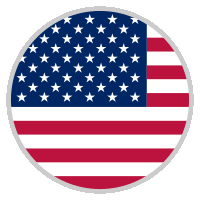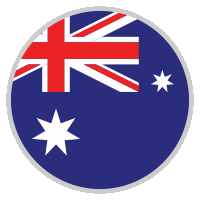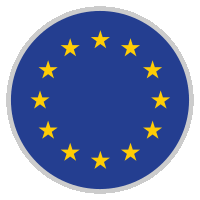-
Protein Synthesis Inhibitor
Cycloheximide (also known as actidione) is used as an selective antibiotic. It inhibits the protein synthesis (DNA-dependent RNA) of saprobic fungi eukaryotes. by binding with the 80S ribosome, while inactive against dermatophytes and systemic fungi.- Han Xiao, .et al. , JPA, 2023, Apr 19
- Shuanghui Lu, .et al. , Chem Biol Interact, 2022, Dec 1;368:110219 PMID: 36243147
- Ke Chen, .et al. , Cancer Commun (Lond), 2021, Apr; 41(4): 316-332 PMID: 33591636
- Zhiyuan Qin, .et al. , Cancers (Basel), 2021, Feb 4;13(4):618 PMID: 33557163
- Hua Xu, .et al. , Cancers (Basel), 2020, Apr; 12(4): 831 PMID: 32235588
-
DNA and RNA synthesis inhibitor
Fluorouracil (Adrucil) is a suicide inhibitor and works through irreversible inhibition of thymidylate synthase.- Adi Jacob Berger, .et al. , Nat Cancer, 2021, 2, 1055-1070 PMID: 35121883
-
DNA/RNA Synthesis inhibitor
Bleomycin sulfate is a mixture of the sulfate salts of basic glycopeptide antineoplastic antibiotics isolated from Streptomyces verticillus.- Mai Kanemaru, .et al. , J Dermatol Sci, 2018, Jan;93(1):41-49 PMID: 30655107
-
Carboplatin is a chemotherapy drug used against some forms of cancer (mainly ovarian carcinoma, lung, head and neck cancers). Cisplatin and carboplatin, as well as oxaliplatin, interact with DNA, akin to the mechanism of alkylating agents.
- Hye Ryeong Jun, .et al. , Biomaterials, 2023, May;296:122087 PMID: 36924663
- Vijaya Bharti, .et al. , Cell Rep, 2022, Dec 20;41(12):111826 PMID: 36543138
- Jianwei Dou, .et al. , J Sep Sci, 2020, Dec 4 PMID: 33275824
-
DNA/RNA Synthesis inhibitor
Cidofovir (Vistide) is an antiviral used for the treatment of cytomegalovirus (CMV) infection (ie: retinitis).- Adhikary A, .et al. , J Phys Chem B, 2015, Sep 3;119(35):11496-505 PMID: 26237072
- Cisplatin was the first member of a class of platinum-containing anti-cancer drugs, which now also includes carboplatin and oxaliplatin. These platinum complexes react in vivo, binding to and causing crosslinking of DNA, which ultimately triggers apoptosis (programmed cell death).
- Jintian Song, .et al. , J Cancer, 2023, May 21;14(9):1515-1530 PMID: 37325046
- Huan Li, Srinivas Chatla, .et al. , Res Sq, 2023, Apr 6;rs.3.rs-2688694 PMID: 37066268
- Min-Yung Kuo, .et al. , Int J Mol Sci, 2022, Dec 21;24(1):138 PMID: 36613579
- Vijaya Bharti, .et al. , Cell Rep, 2022, Dec 20;41(12):111826 PMID: 36543138
- RUI-NING LIANG, .et al. , Research Square, 2022, July 6th
- Wei Zeng, .et al. , Exp Ther Med, 2021, May; 21(5): 424 PMID: 33747163
- Yi-Ru Pan, .et al. , Biomolecules, 2020, Nov 9;10(11):1529 PMID: 33182492
- Amnah Alshangiti, .et al. , Neuronal Signal, 2019, 2019
- Calhelha RC, .et al. , Analyst, 2017, Oct 23;142(21):4124-4141 PMID: 28991301
- Pi-Lin Sung, .et al. , Oncotarget, 2016, Jan 26; 7(4): 4036-4047 PMID: 26716408
- Clafen (Cyclophosphamide) is a nitrogen mustard alkylating agent. An alkylating agent adds an alkyl group (CnH2n+1) to DNA. It attaches the alkyl group to the guanine base of DNA, at the number 7 nitrogen atom of the imidazole ring.
- Takashi Azuma, .et al. , SEP PURIF TECHNOL, 2019, Apr; 212: 483-489
- Azuma T, .et al. , Environ Sci Pollut Res Int, 2017, Aug;24(23):19021-19030 PMID: 28660504
- Azuma T, .et al. , Sci Total Environ, 2016, Apr 1;548-549:189-197 PMID: 26802347
-
DNA/RNA Synthesis inhibitor
Clofarabine is a second generation purine nucleoside analog with antineoplastic activity- Xie J, .et al. , Pediatr Blood Cancer, 2019, Dec 25:e28133 PMID: 31876116
- Dacarbazine is an antineoplastic chemotherapy drug used in the treatment of various cancers.Dacarbazine is a member of the class of alkylating agents, which destroy cancer cells by adding an alkyl group (CnH2n+1) to its DNA.
-
DNA/RNA Synthesis inhibitor
Daptomycin is a lipopeptide antibiotic used in the treatment of certain infections caused by Gram-positive organisms.- Viktoria Lazar, .et al. , Nature, 2022, 610: 540-546 PMID: 36198788
- Shigeru Fujimura, .et al. , J Infect Chemother., 2015, Oct;21(10):756-9 PMID: 26162777
-
DNA/RNA Synthesis inhibitor
Oxaliplatin is a platinum-based antineoplastic agent that is used in cancer chemotherapy. In vivo studies showed that Oxaliplatin has anti-tumor activity against colon carcinoma through its (non-targeted) cytotoxic effects.- Mohamed Elbadawy, .et al. , Biomed Pharmacother, 2021, Oct;142:112043 PMID: 34411919
- Tatsuya Usui, .et al. , Int J Mol Sci, 2018, Apr; 19(4): 1098 PMID: 29642386
- Shimokawa M, .et al. , Nature, 2017, May 11;545(7653):187-192 PMID: 28355176
- Eri Takiguchi, .et al. , Exp Ther Med, 2017, Nov; 14(5): 4293-4299 PMID: 29067110
-
DNA/RNA Synthesis inhibitor
Floxuridine is an oncology drug that belongs to the class known as antimetabolites. - Fludarabine or fludarabine phosphate (Fludara) is a chemotherapy drug used in the treatment of hematological malignancies (cancers of blood cells such as leukemias and lymphomas) .Fludarabine inhibits DNA synthesis by interfering with ribonucleotide reductase and DNA polymerase. It is active against both dividing and resting cells.
-
DNA/RNA Synthesis inhibitor
Tegafur is a chemotherapeutic 5-FU prodrug used in the treatment of cancers. It is a component of tegafur-uracil.- Takashi Azuma, .et al. , SEP PURIF TECHNOL, 2019, Apr; 212: 483-489
- Azuma T, .et al. , Environ Sci Pollut Res Int, 2017, Aug;24(23):19021-19030 PMID: 28660504
- Azuma T, .et al. , Sci Total Environ, 2016, Apr 1;548-549:189-197 PMID: 26802347
-
DNA/RNA Synthesis inhibitor
Gemcitabine (Gemzar) is a newer chemotherapy drug acting by replacing one of the building blocks of nucleic acids during DNA replication in cancer cells, preventing tumor growth.- G. R. Iglesias, .et al. , Polymers, 2018, 10(3), 269
- Ifosfamide is a cytostatic agent that is structurally related to cyclophosphamide.
- Levofloxacin is a fluoroquinolone antibiotic. It is active against S. aureus, S. epidermidis, B. subtilis, E. coli, P. aeruginosa, and K. pneumoniae (MICs = 0.25, 0.25, 0.5, 0.03, 4, and 0.25 μg/ml, respectively).
- Lincomycin is a lincosamide antibiotic isolated from Streptomyces lincolnensis which is reported to inhibit bacterial protein synthesis and is concentration dependent.
- Lomustine is an alkylating nitrosourea compound that possesses antitumor activity similar to Carmustine causing DNA interstrand cross-linking.
- Mercaptopurine has been shown to interfere with DNA and RNA synthesis and cause inhibition of de novo purine syntehsis.
- Mizoribine is an imidazole nucleoside immunosuppressant agent that was first isolated from the mold Eupenicillium brefeldimium with antibiotic and cytotoxic effects.
- Nelarabine is a purine nucleoside analog converted to its corresponding arabinosylguanine nucleotide triphosphate (araGTP), resulting in inhibition of DNA synthesis and cytotoxicity.
- Trifluridine is an anti-herpesvirus antiviral drug, used primarily on the eye. It was sold under the trade name, Viroptic, by Glaxo Wellcome, now merged into GlaxoSmithKline.
-
DNA/RNA Synthesis inhibitor
CX-5461 is a first-in-class non-genotoxic small molecule targeted inhibitor of RNA polymerase I (Pol I) that activates the p53 pathway without causing DNA damage.- Saruul Tungalag, .et al. , Int J Hematol, 2023, Feb 13 PMID: 36780110
- Martine Chebrout, .et al. , J Cell Sci, 2022, 135 (6): jcs258798 PMID: 35048992
- Taro Mannena, .et al. , Mol Biol Cell, 2021, 32:ar33, 1-11 PMID: 34495685
- Shuichiro Okamoto, .et al. , Biosci Biotechnol Biochem, 2020, Aug 15;1-8 PMID: 32799625
- Ahmed Abdullah Ahmed, .et al. , Sci Rep, 2020, 10: 12192 PMID: 32699225
- Abed Saady, .et al. , Dyes Pigm, 2020, 174: 107986
- Jackobel AJ, .et al. , Biochim Biophys Acta Gene Regul Mech, 2019, Aug 2:194408 PMID: 31382053
- Hiroaki Suzuki, .et al. , Cell Death Dis, 2018, Oct; 9(10): 975 PMID: 30250194
- Anastasia Gelgor, .et al. , Oncotarget, 2018, Mar 2; 9(17): 13822-13833 PMID: 29568397
- Wang ZF, .et al. , Cell Chem Biol, 2018, Nov 29. pii: S2451-9456(18)30378-7 PMID: 30503283
- Yuko Fujiwara, .et al. , EBioMedicine, 2018, Jul; 33: 33-48 PMID: 30049386
- Maïmouna Coura Kone, .et al. , Biol Reprod, 2016, Apr;94(4):95, 1-12 PMID: 26984997
-
MDMX Inhibitor
NSC207895 is a cell-permeable benzofuroxan compound that downregulates the p53 negative regulator MDMX protein level in MCF-7, LNCaP, and A549 cells (1 to 10 µM for 16 to 24 h) by suppressesing MDMX promoter transcription activity (IC50 = 2.5 µM in HT1080 cells), leading to enhanced p53 stabilization and activation.
-
DNA synthesis inhibitor
Gemcitabine (LY 188011) is a DNA synthesis inhibitor which inhibits the growth of BxPC-3, Mia Paca-2, PANC-1, PL-45 and AsPC-1 cells with IC50s of 37.6, 42.9, 92.7, 89.3 and 131.4 nM, respectively.- Yi-Ru Pan, .et al. , Int J Biol Sci, 2023, May 21;19(9):2772-2786 PMID: 37324940
- Khan Mohammad Imran, .et al. , Pharmaceutics, 2023, May 24;15(6):1585 PMID: 37376034
- Yi-Ru Pan, .et al. , Biomolecules, 2020, Nov 9;10(11):1529 PMID: 33182492
-
DNA synthesis inhibitor
Mitomycin C is a DNA crosslinking agent that inhibits DNA synthesis and induces apoptosis in a variety of cells.- Gehlen-Breitbach S, .et al. , Int J Oral Sci, 2023, 15(1):16 PMID: 37024457
-
RHA inhibitor
YK 4-279 is an inhibitor of RNA Helicase A (RHA) binding to the oncogenic transciption factor EWS-FLI1.- Christopher M Schafer, .et al. , Proc Natl Acad Sci U S A, 2020, Oct 20;117(42):26494-26502 PMID: 33020273
- Azithromycin is an azalide antibiotic, which inhibits the growth of gram negative bacteria, such as Haemophilus influenza.
- Adenine sulfate is a sulfate salt form of adenine which is a purine derivative and a nucleobase with a variety of roles in biochemistry.
- Aldoxorubicin, also known as INNO-206, is the 6-maleimidocaproyl hydrazone derivative prodrug of the anthracycline antibiotic doxorubicin (DOXO-EMCH) with antineoplastic activity.
- Jingjing Ding, .et al. , Adv Mater, 2021, Feb;33(7):e2005562 PMID: 33432702
- Dos Santos Câmara AL, .et al. , Nanomedicine (Lond), 2017, Aug;12(15):1751-1765 PMID: 28703043
- Apaziquone is an indolequinone bioreductive prodrug and analog of mitomycin C with potential antineoplastic and radiosensitization activities.
-
Topoisomerase inhibitor
Epirubicin is a cell-permeable antitumor antibiotic. A stereoisomer of Doxorubicin that exhibits reduced cardiotoxicity. Epirubicin?€?s antitumor actions are mediated by targeting and inhibiting Topo II (topoisomerase II).- Xiu-wu Pan, .et al. , Oncol Rep, 2016, Jan;35(1):334-42 PMID: 26496799
- Bleomycin hydrochloride is an antitumor antibiotic which induces apoptosis.
-
natural cyclic oligopeptide antibiotic
Antibiotic that inhibits bacterial protein synthesis. Inhibits mRNA-tRNA translocation by GTPase elongation factor G (EF-G), EF-TU(GTP)-catalyzed aa-tRNA delivery and the activity of initiation factor 2 (IF-2). Antitumor agent; induces cell cycle arrest and apoptosis in breast cancer cells via downregulation of FOXM1 expression. - Tubercidin is an adenosine analog, is an antibiotic obtained from Streptomyces tubercidicus.
- Uridine triphosphate (UTP;Uridine 5'-triphosphate) is a nucleotide that regulates the functions of the pancreas in endocrine and exocrine secretion, proliferation, channels, transporters, and intracellular signaling under normal and disease states.
-
IMPDH inhibitor
AVN-944 (also known as VX-944) serves as an effective oral inhibitor, specifically targeting and inhibiting IMPDH (inosine monophosphate dehydrogenase). This enzyme plays a crucial role as a rate-limiting factor in the synthesis of guanine nucleotides from scratch. Additionally, AVN-944 acts against the synthesis of RNA in arenaviruses, effectively preventing arenavirus infections. Demonstrating a wide spectrum of anti-cancer properties, AVN-944 is utilized in research related to multiple myeloma (MM) and acute myeloid leukemia (AML).
- Kevin Chiem, .et al. , Microbiol Spectr, 2023, Aug 17;11(4):e0474522 PMID: PMC10434227
- Desarey Morales Vasquez, .et al. , Viruses, 2020, Sep; 12(9): 1041 PMID: 32961956
- Park JG, .et al. , J Virol, 2020, Mar 17;94(7) PMID: 31941776
- Dunham EC, .et al. , Antiviral Res, 2018, Sep;157:140-150 PMID: 30031760
- Blasticidin S HCl is a nucleoside antibiotic isolated from Stretomyces girseochromogenes, and acts as a DNA and protein synthesis inhibitor.
-
DNA/RNA Synthesis inhibitor
Chlorambucil is a nitrogen mustard alkylating agent. -
protein synthesis inhibitor
Puromycin 2HCl is an aminonucleoside antibiotic, which acts as a protein synthesis inhibitor. -
APE1 inhibitor
CRT0044876 is a potent and selective APE1 inhibitor with IC50 of ~3 μM.
DNA/RNA Synthesis
Catalog No.
Product Name
Application
Product Information
Product Citation








